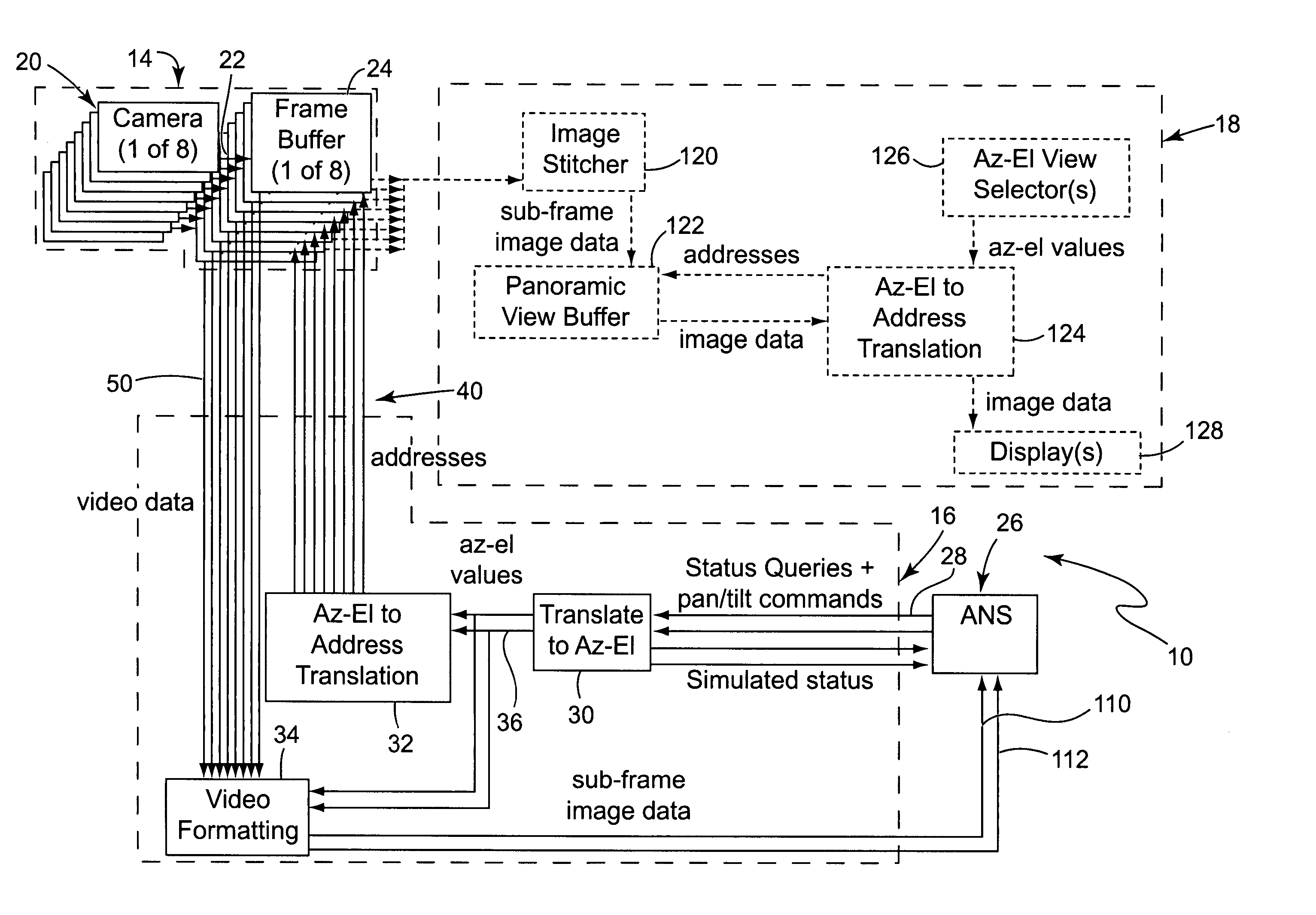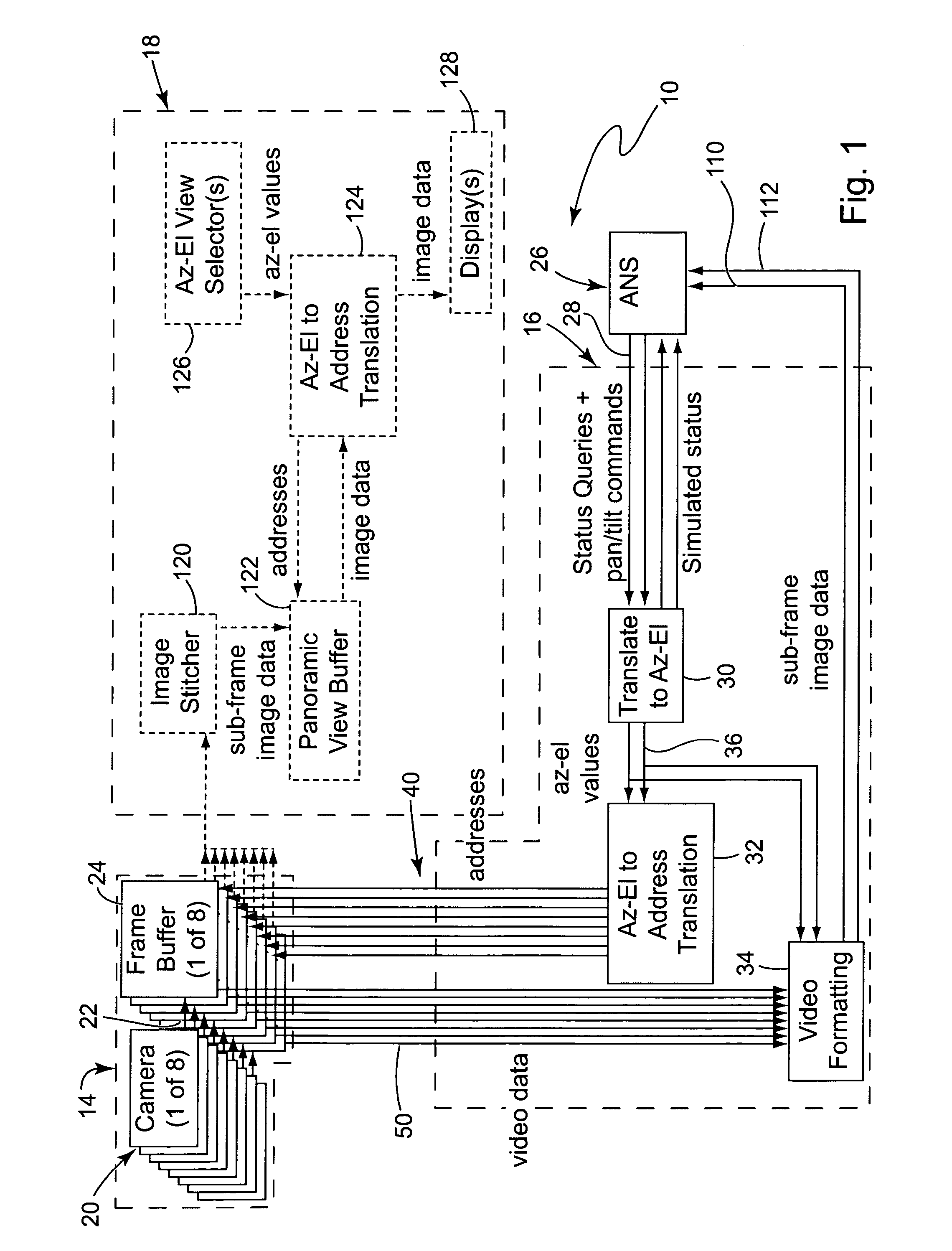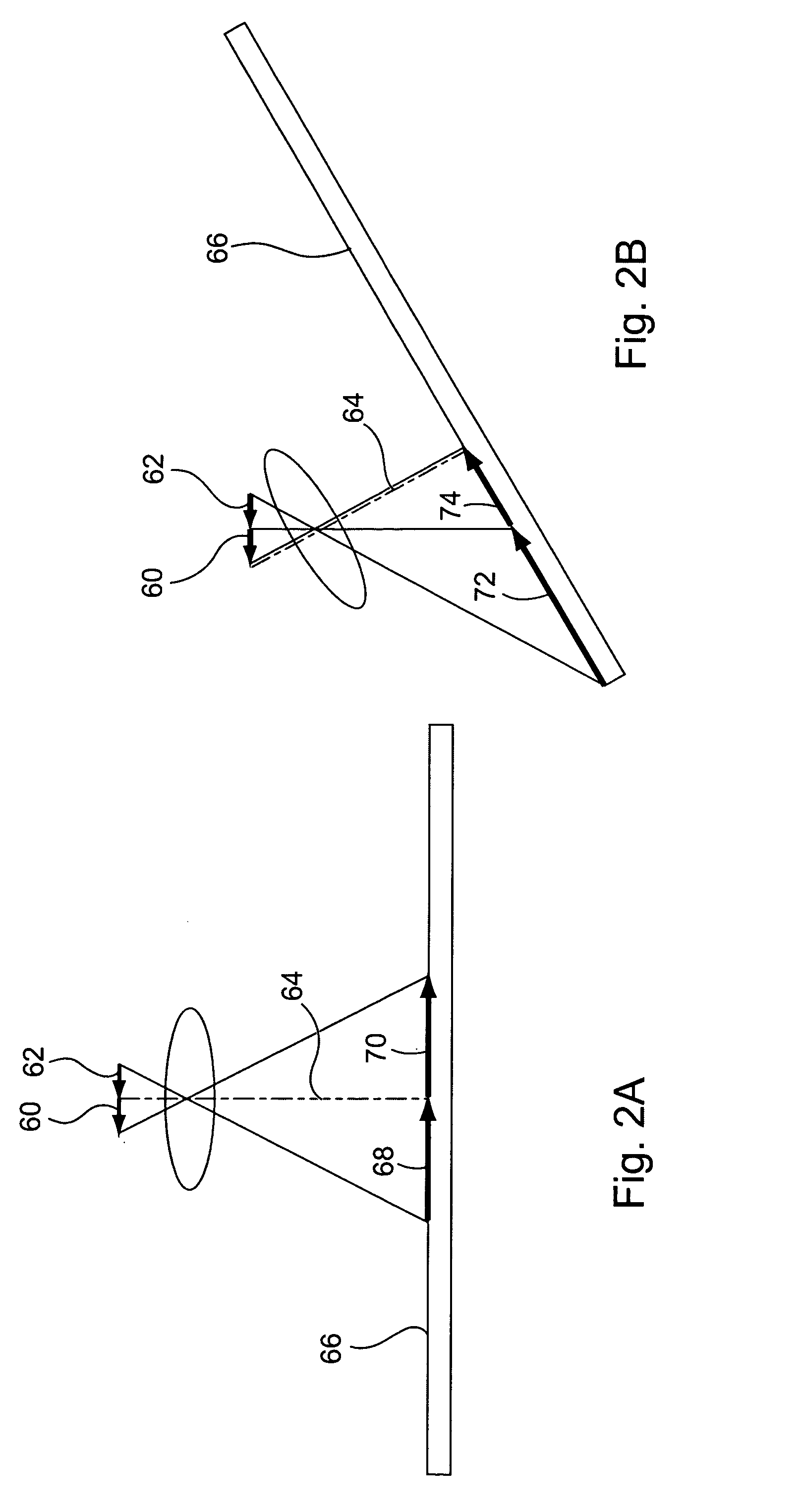Virtual pan/tilt camera system and method for vehicles
a camera system and virtual technology, applied in the field of virtual pan/tilt camera system and vehicle camera system, can solve the problems of difficult automatic navigation of ground vehicles, inability to tell whether it is surmountable, and obstacles such as trees, rubble, and other objects
- Summary
- Abstract
- Description
- Claims
- Application Information
AI Technical Summary
Benefits of technology
Problems solved by technology
Method used
Image
Examples
Embodiment Construction
[0017] With reference to the drawings, there is shown a preferred embodiment of a virtual pan / tilt camera system 10 in accordance with the present invention for use with a manned ground combat vehicle 12 as illustrated in FIG. 3. The system generally comprises a fixed camera video data input 14, a reformatting network section 16, and a display system section 18. The fixed camera video data input 14 further comprises a plurality of video cameras 20, each of which is mounted in a fixed position on the vehicle 12. In this embodiment eight such cameras are shown, but it is to be understood that a fewer or greater number of cameras may be used. A suitable camera is the Hitachi HV-C20 or the Sony DXC 9000. Each camera outputs video data 22 representing the images viewed by that camera to a frame buffer 24, there being eight such frame buffers, one for each video camera. Each frame buffer stores at addresses within the buffer the video data it receives from its respective camera.
[0018] An...
PUM
 Login to View More
Login to View More Abstract
Description
Claims
Application Information
 Login to View More
Login to View More - R&D
- Intellectual Property
- Life Sciences
- Materials
- Tech Scout
- Unparalleled Data Quality
- Higher Quality Content
- 60% Fewer Hallucinations
Browse by: Latest US Patents, China's latest patents, Technical Efficacy Thesaurus, Application Domain, Technology Topic, Popular Technical Reports.
© 2025 PatSnap. All rights reserved.Legal|Privacy policy|Modern Slavery Act Transparency Statement|Sitemap|About US| Contact US: help@patsnap.com



